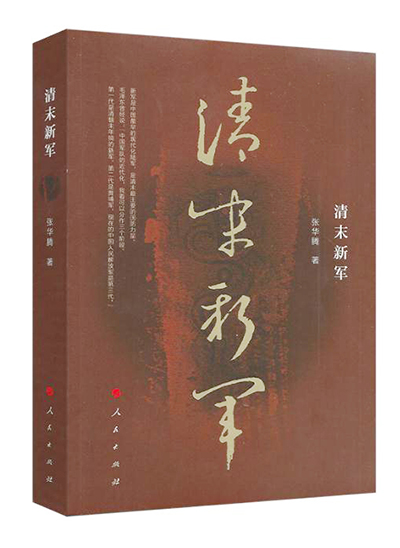New Army in late Qing era

New Army in the Late Qing Dynasty
During the War of Jiawu (1894–95) beween Japan and Qing China, the Xiang and Huai yongying, two military forces in the late Qing Dynasty, were completely routed. The Qing court was forced to cede territory and pay indemnities, suffering a great humiliation. With no army to fight, training a new army became the top priority of the Qing court. As a result, a new political and military force, the New Army, stepped onto the stage of history.
New Army in the Late Qing Dynasty, written by Zhang Huateng, a professor from the School of History and Civilization at Shaanxi Normal University, focuses on the two stages of training for the New Army in the late Qing, as well as the characteristics of each stage.
The first stage was after the defeat in the War of Jiawu, which marks the beginning of the New Army. In early 1895, Hu Yufen (1840–1906) trained the Dingwu Army, or the Pacification Army in Xiaozhan, Tianjin, and at the end of the same year, renamed the army “newly-built land force.” Almost at the same time, Zhang Zhidong (1837–1909), then acting governor-general of Liangjiang (present-day Jiangsu, Anhui, and Jiangxi), trained a “self-strengthening army” in Jiangning (present-day Nanjing in Jiangsu Province). At this stage, the training of the New Army was not very effective, mainly with the above-mentioned two armies totaling just over 10,000 men.
In the second stage, after the Eight-Nation Alliance Force invaded China in 1900, the Qing court carried out new political reforms. During this period, military reforms and the training of the New Army were still major affairs.
The book descriptively exhibits the panorama of the New Army’s training in late Qing. For example, details include the number of horse doctors, grooms, farriers, carriage drivers, and backup soldiers for each cavalry, and the monthly costs of each army from the commanding officer down to the groom, to even each mule, horse, and cannon. The book also reexamines the sum of the New Army in late Qing, the number of new troops trained in Shaanxi, and the number of participants gathering for military drills in Hejian.
As an important political and military force at the end of the Qing Dynasty, the New Army had a profound impact on the political situation in the late Qing and the early Republican eras. During the Revolution of 1911, the northern and southern New Army performed an important part in overthrowing the Qing court. After the defeat of Yuan Shih-kai (1859–1916), the backbone force of the New Army was split into northern and southern warlord factions. After the victory of the National Revolutionary Army’s Northern Expedition in 1928, the forces of the New Army basically withdrew from the historical stage, having remained active for more than 30 years.
Huang Lei is from the School of History and Civilization at Shaanxi Normal University.
Edited by YANG LANLAN
